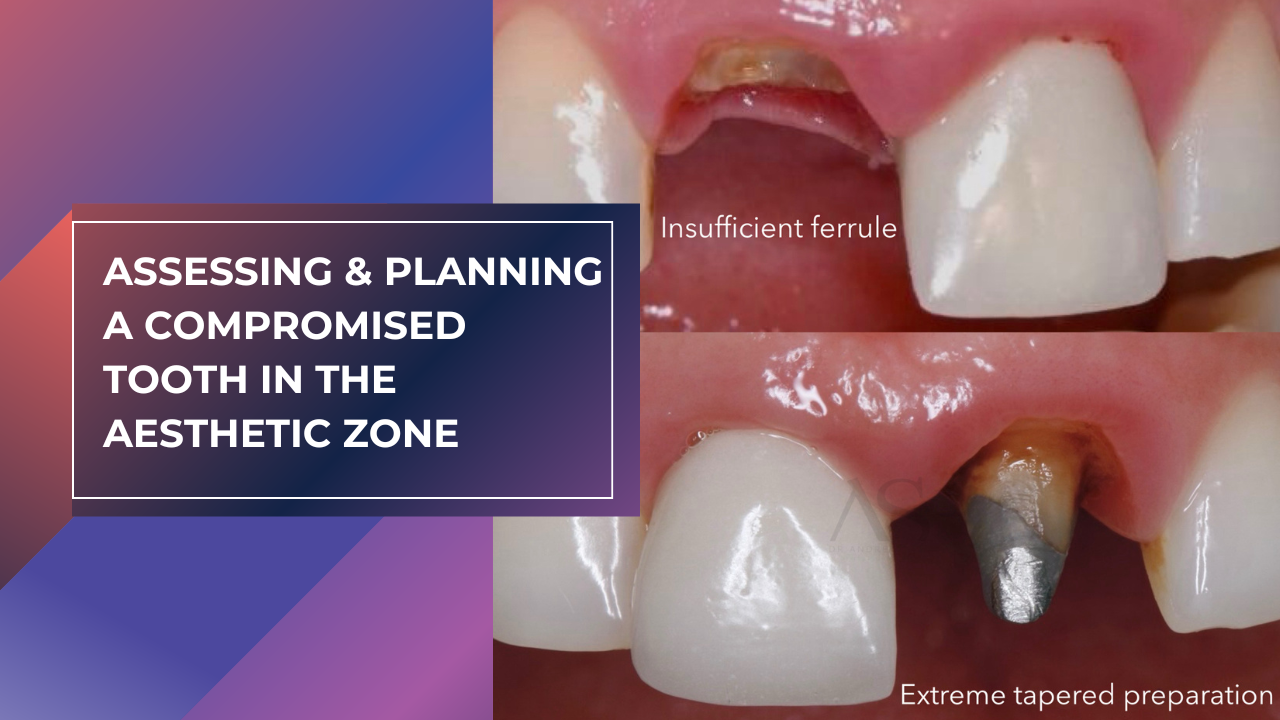Veneer Occlusion: The #1 THING to Know
Aug 11, 2023
Have you seen patients with severe tooth wear who want veneers but you don’t know where to start? Have you ever done a restoration on a worn front tooth and have the patient call up the next day annoyed saying "it broke off eating a soft sandwich?" Isn't it strange how everyone breaks their teeth on sandwiches? So if we can't be successful fixing one worn tooth, what hope do we have with multiple worn teeth?
Well, I'm going to let you in on the number 1 occlusion principle that once you know, you will never un-know (I don't think that's a word, but I'm using it). It will form the foundation for you to begin to understand veneer occlusion.
Here it is: Muscles always win.
In the masticatory system we have jaws, joints, muscles, ligaments and lastly teeth. If this was a boxing match, the muscles will win in a knockout because they naturally want to bring the jaw back to it's biologically load bearing designed position when in function. What position is this? Well I will resist the temptation to say the all confusing, debate starting word (Centric Relation, shhhh), but suffice to say, it is when there is complete seating of the condyle into the glenoid fossa. If a tooth interferes with the jaw getting to this position during function, the tooth will wear crack, break or migrate until the jaw reaches this position or they will develop pain in the masticatory system.
If your restoration interferes with this jaw position, then this my friend will break quicker than you can say "I wish I never touched this tooth". If your restoration is the ultra hard zirconia, your patient won't break this, so instead you will introduce pain to the masticatory system. Either way they end up back in your dental chair for constant free repairs on a Friday afternoon or needing endodontic treatment - which no one wants!
So where do we start with occlusion for veneers? For diagnosis we need to be able to identify when things are going wrong. By doing so we can start developing a treatment plan that reduces the risk of this occurring in our future veneers or restorations.
The top 3 clues to look out for that this activity is happening:
- Tooth wear into the dentine not associated with trauma and erosion: Teeth are the hardest thing in our body and will not wear through over our life time from normal function unless the muscles are over functioning in an uncoordinated manner, which is what we call 'parafunction'.
- Abfraction lesions in localised areas: I know this can be a topic of debate, but in my experience unless a patient just brushes a segment of teeth like a trojan, this type of cervical lesion is due to pathological occlusal forces from parafunction. Have you ever seen weird localised severe recession on the palatal aspect of upper first molars? Do you think the patient brushes just this area like crazy?
- Pain in the masticatory system: Generally this is a red flag that some kind of inflammatory process is going on. A healthy occlusion is NEVER painful. In your extraoral exam, this is done by palpating the TMJ and muscles of mastication. I left this as third because pain can be arbitrary. Patients have varying degrees of pain threshold and if they have broken or worn down teeth, they quite often have no pain.
Occlusion for veneers is a difficult concept to understand but you've got to start somewhere and this is no better place to start. Check out my article about Unlocking the Key Steps to Begin Veneer Occlusion.
The information contained in this blog post and podcast is based on Andrew See’s own experiences, views and knowledge and Andrew See and Dental Mastery Academy Pty Ltd do not guarantee that any particular outcome (including clinical outcome) will be achieved from using any of the information contained in this material. The material is for personal use only and not to be copied, reproduced, re-used, published, communicated, adapted, or used to create derivative works from or commercially exploit the materials; distribute, sell, licence or otherwise all or any part of the materials. © Dental Mastery Academy Pty Limited ABN 23 665 239 510.
Join Our Network of High Performing Dentists
Get aesthetic tips that help you avoid trial and error, straight to your inbox.
We hate SPAM. We will never sell your information, for any reason.




